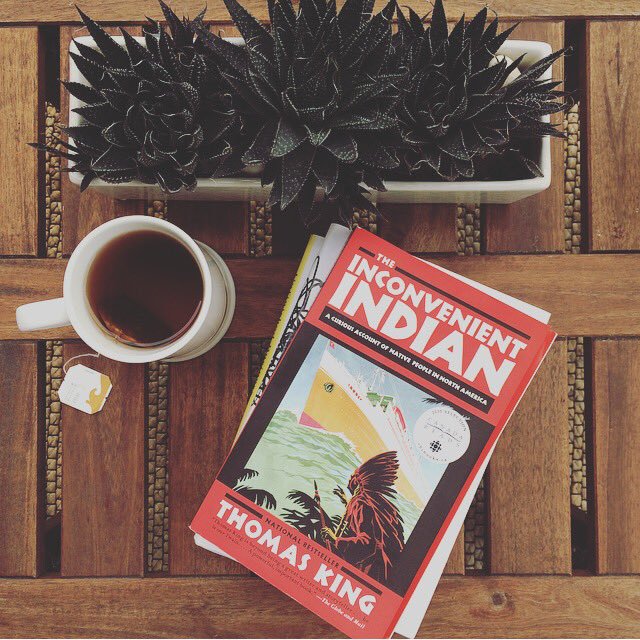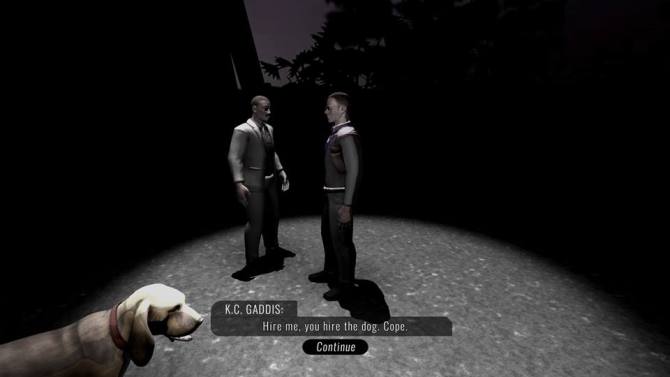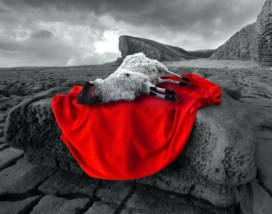
After finishing the last portion of Thomas King’s book, “The Inconvenient Indian” I realized how ignorant I was towards the past and current problems facing Indigenous communities. Like many non-Natives, I was briefly taught that the European settlers stole the Native people’s land, however my elementary school teachers failed to provide an in-depth analysis of the atrocities committed by the European colonialists and the effects that colonialism continues to have on Aboriginals today. Whereas in the ending chapters of his book, King discusses how historical practices of mistreating Natives has influenced society’s current perception of them. Rather than being viewed as equals, Natives continue to face racism and neglection from government leaders and non-natives citizens alike. To add emphasis to his point of inequality, King contrasts historical atrocities with recent occurrences that prove racism against Natives is still prevalent in today’s society. Although the facts he incorporated were devastating, they are necessary for non-natives, like myself to become educated on these issues. In my opinion, that’s what makes this book a fitting text to analyze through postcolonial literary theory. The book’s pages are loaded with examples that portray colonialism’s damaging effect on current natives communities.
 In past 50 years, police officers and court officials have been the oppressors for indigenous people. I found this shocking considering that the people in these professions are supposed to serve and protect all citizens. King provided several troubling situations but the most appalling example I found was a story from 1973, where a caucasian man named Darld Schmitz was drunk at bar and had the idea of “…getting himself an Indian”(King 169). He later went on to killing a Native man named Bad Heart Bull. Due to the judge’s favourable view of Caucasians, Schmitz was not charged with first degree murder, and served no jail time (King 169). In spite of all the evidence and the testimonies of multiple witnesses, the judge saw the killing as a “barroom brawl done wrong”( King 170). In contrast, Bad Heart Bull’s mother was arrested for trying to attend her son’s trial and was struck in the face with a baton, and choked by the courthouse officers. I found this infuriating; If the victim were white, a fair final verdict would have been given. It also troubles me how this event occurred less than 50 years ago, and it serves as a clear indicator that Natives are continued to be viewed as the underdogs of society.
In past 50 years, police officers and court officials have been the oppressors for indigenous people. I found this shocking considering that the people in these professions are supposed to serve and protect all citizens. King provided several troubling situations but the most appalling example I found was a story from 1973, where a caucasian man named Darld Schmitz was drunk at bar and had the idea of “…getting himself an Indian”(King 169). He later went on to killing a Native man named Bad Heart Bull. Due to the judge’s favourable view of Caucasians, Schmitz was not charged with first degree murder, and served no jail time (King 169). In spite of all the evidence and the testimonies of multiple witnesses, the judge saw the killing as a “barroom brawl done wrong”( King 170). In contrast, Bad Heart Bull’s mother was arrested for trying to attend her son’s trial and was struck in the face with a baton, and choked by the courthouse officers. I found this infuriating; If the victim were white, a fair final verdict would have been given. It also troubles me how this event occurred less than 50 years ago, and it serves as a clear indicator that Natives are continued to be viewed as the underdogs of society.
Next, King brought up multiple incidents that occurred between the 1990’s to the early 2000’s where Saskatoon police officers murdered indigenous men for entertainment purposes (King 200). I was shocked that I have never heard of these cases before considering that these victims were murdered within my lifetime. The method used to kill these Natives were simple but deadly. They conducted these deaths by arresting Aboriginal men (usually for disorderly behavior), driving them out of the city in freezing temperatures, and abandoning them there. The practice was known as taking Aboriginal people for “starlight tours.” Sadly, many of these men froze to death. The majority of the police officers involved only had their licenses suspended and served little to no jail time. I liked how King contrasted these crimes with the ethnic cleansing of Natives that occured in the early 1700’s. While one crime was more gruesome than the other, both cases express the negative view that some non-natives have towards indigenous people. King specifically mentioned an instance that made me infuriated; a man named Darrel Night was dropped off at the outskirts of Saskatoon but was able to call a taxi from the nearby Queen Elizabeth Power Station and suffered no ill effects. The two officers involved, constables Dan Hatchen and Ken Munson of the Saskatoon Police Service, claimed that “they had simply given them a ride home and dropped him off at his own request” (King 199), but were convicted of unlawful confinement in September 2001 and sentenced to only eight months in prison. While although they received some punishment for their actions, I strongly believe they deserve more considering that this was attempted murder.
but was able to call a taxi from the nearby Queen Elizabeth Power Station and suffered no ill effects. The two officers involved, constables Dan Hatchen and Ken Munson of the Saskatoon Police Service, claimed that “they had simply given them a ride home and dropped him off at his own request” (King 199), but were convicted of unlawful confinement in September 2001 and sentenced to only eight months in prison. While although they received some punishment for their actions, I strongly believe they deserve more considering that this was attempted murder.
“I would like to remind everyone that, contrary to the stories that periodically appear in the news papers… many of the tribes in North America are managing reasonably well. Indians have also become more active in politics and arts. We are also doctors,surgeons, teachers, pilots… This is a reminder of our cultural persistence and adaption” (King 155). As non-natives, we should contribute to ending anti-Native ideologies and work together so they can be treated as equals. Even if our schools have failed to properly teach us on Canada’s gruesome history, we must combat out ignorance by learning these atrocities in our own spare time.
King, Thomas. The Inconvenient Indian illustrated: a curious account of native people in North America. Doubleday Canada, 2012.
Advertisements Share this:




